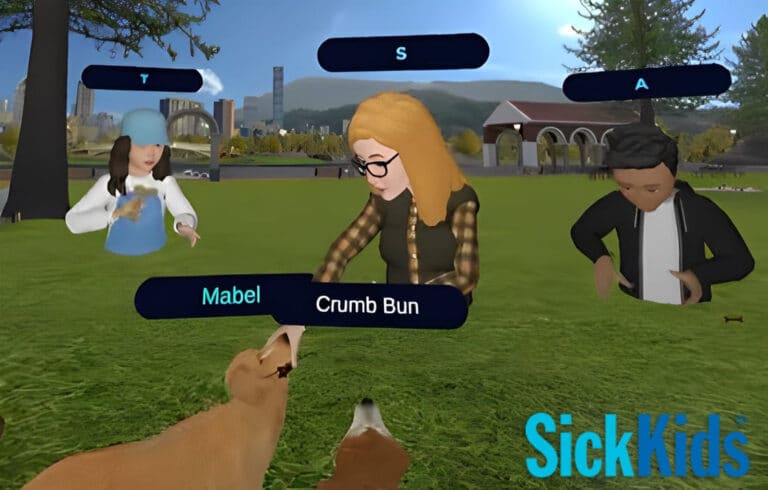What is Social Prescribing?
Social prescription is a method used by healthcare professionals to refer patients to non-medical sources of support, such as community groups, charities, or arts and leisure activities. These activities are normally conducted in community centers or social settings. The aim of social prescribing is to help address social, emotional, and practical needs that may be contributing to their health condition.
Why VR?
Virtual reality (VR) is conducive to social prescribing as a way to provide people with non-pharmacological interventions for a range of physical and mental health conditions. VR is a technology that supplements in-person or online activities, as well as a standalone intervention. One example of social prescribing in VR is recreational therapy, where patients get together with therapists virtually to play games and sports or to try out new hobbies.
VR transcends the limitations of social prescribing exercises in person because it removes the logistical hurdles of transportation, space, and required equipment. It also surpasses the capabilities of video calling by allowing participants to interact with each other and virtual objects in three dimensions. It offers simulations that would not be accessible in any other format due to the high cost, the physical and mental availability of patients, or even the rules of physics and nature.
How is Social Prescribing Used?
Overall, the use of VR for social prescribing can be a powerful tool for providing non-pharmacological interventions to patients and helping them to improve their physical and mental health. To use VR for social prescribing, healthcare professionals first assess the needs of their patients and determine which VR experiences would be most appropriate. Next, they refer the patients to the right VR program and follow up to monitor their progress and adjust the intervention as needed. This process is sometimes complemented by metrics provided in VR apps such as speaking time, gaze, and other biosensors if provided by the platform and accompanying hardware.
VR Social Prescribing for Mental Health
Luckily, social prescribing in VR can be an effective intervention for many different groups of people with a variety of mental health conditions. Some common examples are as follows:
Anxiety and stress: VR programs that use techniques such as exposure therapy or relaxation training can be helpful for people with anxiety and stress. For example, a VR program might involve mindfulness meditation workshops for multiple people to come together regularly in VR.
Social isolation: VR programs that offer social support and connection can be helpful for people who are isolated or lonely. For example, a VR program might connect patients with similar health conditions in virtual reality support groups, allowing them to share their experiences and offer each other support.
Other mental health conditions: VR programs that offer cognitive behavioral therapy or other mental health treatments can be helpful for people with mental health conditions. For example, a VR program might involve helping a patient with depression to identify and challenge negative thought patterns by utilizing behavioral therapy techniques like cognitive restructuring.
VR Social Prescribing for Physical Health
Chronic pain: VR programs that offer guided relaxation stretching or yoga exercises can be helpful for people with chronic pain. For example, VR programs that guide patients through a series of stretching exercises and relaxation techniques can help them manage their discomfort and learn from each other. When these sessions are conducted in groups, it can encourage participation and build a sense of community over time.
Physical rehabilitation: VR programs that involve virtual reality exercise and movement can be helpful for people undergoing physical rehabilitation. Especially because they can be done from home at the patient’s will. As an example, a VR program might involve recreational therapy activities like VR golfing or ping-pong to help them regain strength and mobility after an injury or surgery. This, in turn, can help them maintain their mental health as well.
These are just a few examples of how VR can be used for social prescribing. VR programs can also be tailored to the specific needs and goals of the patient, making them a highly flexible and effective tool for improving health outcomes.
Foretell Reality
Foretell Reality is a VR platform used to enhance social interaction by allowing professionals to conduct group or one-on-one sessions with their customers. Among our use cases are support groups, soft skills training, exposure therapy, and recreational activities like roasting marshmallows and playing the guitar by a campfire. We offer professionals customizable solutions that are most appropriate for their patients and use cases. Please visit our website to schedule a demo.
References:
Can digital technologies play a role in social prescribing models? (theiet.org)
VR Applications: 23 Industries using Virtual Reality (virtualspeech.com)
Loneliness and Social Isolation – HelpGuide.org
ChatGPT: Optimizing Language Models for Dialogue (openai.com)









